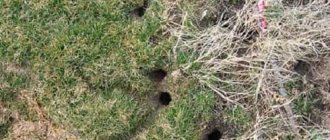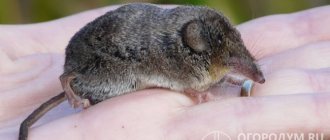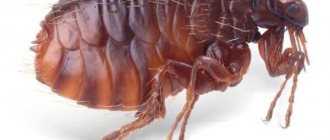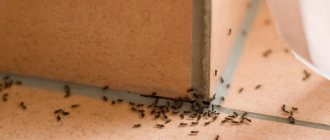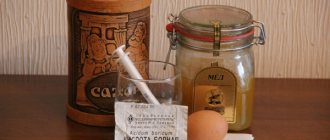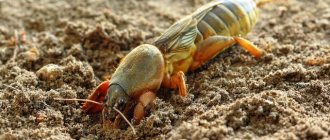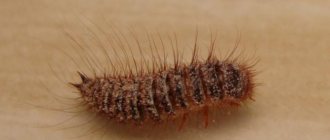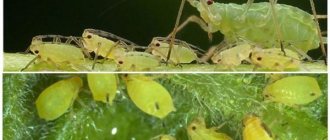With the onset of cold weather, rodents move into private homes. They settle near humans to have access to food and warmth. How to get rid of mice in a private home is a pressing question. After all, rodents are carriers of serious diseases. Therefore, when they appear in the house, you need to take measures to eliminate unpleasant neighbors.
Why do mice appear in a private home?
In late autumn, rodents move closer to people. This is due to low outdoor temperatures and lack of sufficient food. And, if under natural conditions mice breed in accordance with the season, then in warm conditions they breed all year round.
If the presence of rodents is detected in the summer, then it is necessary to identify the cause of their appearance. Mice are attracted to the presence of cluttered places in the house, free access to food, and a sense of security for themselves and their offspring. They can settle underground, in the attic, in the spaces between the walls.
Signs of rodents
You can tell that there are mice in the house by the following signs:
- detection of small holes near the baseboards;
- a musty smell appears in the rooms;
- Mouse droppings can be seen in hard-to-reach places;
- squeaking and rustling at night. After some time, the sounds become audible during the daytime.
The presence of rodents in the house is also indicated by the restless behavior of the cat. She rushes from corner to corner, then takes the pose of a hunter and waits for prey.
Folk remedies for mice
If you have pets and children, it is not recommended to use chemical mice repellents in the house. In this case, folk remedies will help. They are safe, provided the residents are not allergic to the plants used.
Ledum
Due to the strong aroma that wild rosemary emit, it becomes a good method in the fight against rodents. They cannot stand its smell and leave the inhabited territory. There are four ways to use the plant:
- Ledum must be planted in flower pots and placed in rooms. Pots with the plant can also be placed in the garden to drive mice away from the area.
- Using an aroma lamp with wild rosemary essential oil.
- Laying dry grass in the corners of the room and near rodent holes. The grass needs to be changed so that the smell does not disappear.
- Fumigation of rooms with wild rosemary. This is a non-standard method that is used extremely rarely.
Note!
Ledum is a very allergenic plant. Therefore, its use should be avoided if there are young children or adults prone to allergies in the house.
Peppermint
It has a pleasant aroma that many people like. But mice are afraid of this grass. You can, as in the case of wild rosemary, spread dry grass in the corners and area. Essential oil, in the absence of an aroma lamp, can be dropped onto cotton pads or cotton balls and placed in the corners of the rooms.
Another method of use involves using a spray bottle. It is necessary to prepare a strong infusion of mint, strain it and spray it around the room. Mint is an effective remedy in the fight against rodents.
Cilantro (coriander)
Using spices also has good results. Both powdered product and coriander beans are suitable. You can also use fresh cilantro sprigs.
Spices are scattered on kitchen cabinets, in the corners of rooms, in the pantry. The pungent smell repels mice and forces them to leave the house.
Blackroot
Not only mice, but also rats are afraid of this grass. Among the ways to use this plant are the following:
- laying dry grass in the corners;
- spraying cracks and corners with fresh decoction or squeezed plant juice;
- placing crushed roots in rodent burrows and crevices;
- use of thorny seeds. They need to be scattered in rodent habitats. The thorns will stick to the skin of the pests.
When using blackroot, you need to remember safety. Its roots and seeds are poisonous to humans.
Elder
This plant will help you get rid of mice in a private home forever. Elderberry root contains a powerful poison - hydrocyanic acid. To get rid of rats and mice, it is necessary to chop the rhizomes and scatter them in the cellar, on the site. When working with roots, take precautions. Be sure to use protective gloves.
Elderberry decoction and fresh twigs also repel rodents. The broth can be sprayed and the twigs can be placed in mouse holes.
Note!
The hydrocyanic acid contained in the roots is poisonous to humans. To avoid poisoning, do not use the plant in a home with small children and pets.
Sagebrush
Wormwood has a tart odor that is unpleasant to rodents. Dried grass is laid out around the house, on the site. You can also plant the plant in the area, protecting it from mice.
To protect the crop from rodents, you can also put dried wormwood on top of it. This ensures the safety of the crop from pests.
Tansy
Tansy helps cope not only with rodent infestations, but also with insects. Its smell cannot be tolerated by mice, rats, ants, mosquitoes and flies.
Both dry and fresh grass are suitable for eliminating pests. Cut the stems with inflorescences and make small bouquets from them. Tie the stems with strong threads. Hang bunches of tansy in the house, in the attic, out of reach of small children.
How to repel pests
Mice multiply quickly and if the owner of the house shows indifference to the first signs of the appearance of pests, a whole flock will soon breed in his apartment. The presence of long-tailed rodents requires immediate measures to eliminate them.
A simple repellent method to get rid of mice is to get a standing cat. It is desirable that the person from the feline family is not purebred and has good hunting skills. The age of the animal does not matter. Kittens catch mice no worse than adult cats.
Poison - the best drugs
The poison has a good effect and copes well with rodents. Manufacturers produce it in the form of powder, special liquid, poisonous briquette, paste. The following brands have proven themselves well:
- "Rat Death No. 1." The poisonous mass has a pleasant aroma that rodents like. It releases fumes that are harmful to rats and have a depressing effect on the respiratory system of the pests. The maximum effect is achieved a week after treatment;
- "Goliath". The drug helps to poison a large number of rodents. Its effect does not begin immediately, but after a week. During this time, all pests eat the bait, which does not cause them any concern. Soon all the animals die;
- "Ratid 1". Helps poison rodents, used in all types of buildings;
- "Storm". The main advantage of the poison is the lack of decomposition of dead individuals. In this regard, there is no specific smell;
- "Nutcracker". The green briquette acts as bait. The rodent absorbs a poisonous mass that poisons the circulatory and respiratory systems. After a short period of time, suffocation develops, which forces the rodent to crawl out into open areas. A dead specimen is easy to locate and dispose of;
- "Tsunami". The tablet preparation is pink. Safe for pets and people. It has a cumulative effect, having a detrimental effect on the cardiac, nervous and circulatory systems of the rodent.
A poisoned mouse should not be handled with bare hands. You can throw out the pest using a dustpan, or wearing household gloves on your hands.
Modern repellers
If the use of chemicals is impossible for some reason, modern rodent repellers will come to the rescue. Mice and rats are afraid of them. They are safe for people and pets, but have a detrimental effect on unwanted neighbors. Ultrasonic waves penetrate walls and partitions, catching pests in the most inaccessible places.
High-frequency ultrasound causes discomfort and a sense of danger in rodents, forcing them to leave their habitats. For small rooms, it is enough to purchase compact devices such as “Grad” or “Pest Reject”. The Electrokot device is intended for large areas. Its radius of action is up to 200 sq.m.
On a note!
Rodents adapt well to any conditions. Therefore, it is not recommended to use the same methods of dealing with them for a long time. It is advisable to alternate methods in order to permanently discourage pests from settling on your territory.
Physical methods
The method has been used for a long time and is available for any budget. Thanks to their positive qualities, they gained fame and popularity.
Mousetraps
This design was also used by our great-grandfathers. There are two types of traps: open and closed. To make a potential victim want to visit one of them, it is recommended to place bait in the mousetrap. This could be a piece of cheese, sausage or any other product with a strong smell. The aroma will attract the animal; when you touch the mechanism, the spring will work and the mouse will be caught.
Trap Disadvantages: A mouse trap alone will not be enough to permanently eliminate rodents. You'll have to buy several traps.
In case of a false triggering of the mechanism, the trap must be reloaded. A mousetrap doesn't always kill. Rodents can get into it with their tails or limbs.
There will be no such troubles with a crocodile mousetrap. It only works when the mouse or rat is already inside. Careless operation of the structure may result in injury. Therefore, you need to be more careful.
Important! Children should not be allowed to play with such items. Do not leave mousetraps where they could harm your pets.
Electrical traps
This is a new development and it is only gaining popularity among users. The method belongs to the category of humane. Once inside, the rodent is shocked and dies instantly. The structure emits light signals. They help determine whether someone is in the mousetrap or not.
The advantage of the trap is that it can be used repeatedly. The disadvantages are that the mousetrap depends on mains power. Those owners who keep pets need to be especially careful with it.
Attention! The possibility of small animals falling into the trap together with rodents or instead of them cannot be ruled out.
We offer a list of the most famous devices:
- RatZapper.
- Victor Electronic Rat Trap.
- Multi Kill system.
- RAT Trap Victor.
- Rat Killer Yutec.
It is advisable to place the device where pests are most often found, for example, next to walls. You can stop setting mousetraps when there is no droppings or fur of small pests in the room. This means you managed to remove the mice, and you can celebrate your victory.
Glue traps
The adhesive strips work like mousetraps. Such paths are impregnated with a special aroma that attracts rodents. It could be the smell of seeds, bacon, peanuts. Having stepped on such a surface with its paws, the animal cannot leave it without outside help. Making efforts to break free, he only loses strength and becomes even more stuck.
Important! The disadvantages of this type of trap are that they are cruel to rodents. The mice become exhausted and die painfully from dehydration and hunger.
In addition, it is unpleasant to remove half-dead pests from the sticky tape. The advantage of Velcro is that they can be placed anywhere. Together with mice, it is possible to catch cockroaches, snakes and other creatures that you do not want in your home. Device rating:
- Rat & Mouse.
- "Rodentoff".
- "Kotofey"
- Expert Catch.
- "Force site".
"Live traps"
Despite the creepy name, this type of trap is the most humane, since the animal remains alive. The structure is designed in such a way that once a rodent gets into it, it cannot get out on its own. If your plans do not include killing the pest, then this option is for you. The animal will not enter the cage voluntarily, so it needs to be lured with something tasty. Considering that mice and rats are wary of new things, a clever approach with food bait will lull their vigilance.
Attention! To free the trap from a pest, you first need to place it in a bag, then open the door, and when the animal jumps out, you can safely take it out and release it.
The only downside is that mice can come back. You will have to check the device quite often so that the animal inside does not die.
Furry hunter
Cats and male cats originally served as domestic hunters. They were excellent at catching and repelling mice. Nowadays, the hunting instinct of many cats has not only become dulled, but disappeared. This is due to the fact that owners prefer to buy not simple, outbred animals, but cats of noble blood. Not only do they not repel rodents, but they themselves are afraid of them.
For a private home, it is best to take a simple yard cat. He will catch mice with pleasure and excitement and protect the territory entrusted to him from the invasion of rodents.
Mousetraps
Mousetraps are long-known, effective mice repellents. Depending on the number of rodents, you need to purchase one or more devices. Place them in pest habitats and check daily for the presence of bait and mice.
Lures with a pronounced odor are more effective. Therefore, it is advisable to fry pieces of sausage, bread or lard in a frying pan and then place them in a mousetrap. The strong aroma will attract rodents.
Harm to humans
Mice are primarily a source of infections. They can carry many diseases that can be transmitted to humans, from intestinal infections to tuberculosis.
They spoil all the things they can get to - they gnaw on supplies, make nests in things stored for storage, gnaw passages in the walls and floor, disrupting the thermal conductivity of the room.
Rodents are extremely allergic. Their fur, saliva and excrement can cause a severe asthma attack in a person prone to this disease.
Mice smell extremely bad and it is very difficult to get rid of the smell of their waste products.
Homemade baits
Homemade baits will help you catch a mouse without a mousetrap:
- The bottom of a transparent container should be spread with chocolate paste. Turn the trap upside down and place one side on the edge of the coin. When the mouse sneaks under the trap, wanting to eat the treat, the balance will be upset. The container will cover the pest and will not allow it to get out;
- using a jar or aquarium. It is necessary to place edible bait at the bottom of the trap. Attach a homemade ladder from a stack of books or magazines to a jar or aquarium. Once trapped, the pest will not be able to escape, since glass is a slippery material.
Caught rodents should not be handled with bare hands. It is necessary to throw a thick cloth over them and take them away from the living space.
Prevention
It is much more effective not to remove pests, but to take preventive measures that will help get rid of their occurrence.
To do this, it is recommended to adhere to the following simple rules:
- The trash bin should never be overfilled. If it is filling slowly, you do not need to wait until it is completely filled in order to take it out.
- After eating food or finishing the cooking process, it is necessary to carry out additional cleaning to remove all crumbs and other small debris that could attract mouse attention.
- Place mousetraps in the kitchen, attic, basement , closets and cellars, since this is the simplest method of preventive control, which, if not, will not exterminate the pests that accidentally get into these places.
- Do not store food in places easily accessible to rodents.
Preventive measures - how to protect your home from small rodents
There are preventive measures to prevent the appearance of mice in a private home. Here are some ways:
- All cracks must be sealed. Pay special attention to the floor, walls, ceiling;
- at night, it is necessary to close the doors tightly and curtain the windows so as not to attract the attention of rodents;
- do not leave basement doors open;
- sewer and ventilation openings must be covered with metal mesh;
- Pet cages must be kept clean;
- It is advisable to store food supplies in the refrigerator or in tightly closed containers;
- Do not leave dirty dishes in the sink or on the table;
- crumbs should not be allowed on the surface of the table or floor;
- Any leftover food after feeding your pet should be removed without leaving it in the bowl.
These recommendations will help avoid the appearance of mice and other pests in a private home.
Looking for holes
First of all, it would not hurt to identify the source of trouble and eliminate it. To understand the location of harmful animals, there is a proven method: at night, sprinkle flour on the floor and, based on the tracks left by the animals, determine where they crawl out from, where they roam and where they return. Based on this data, they carry out extermination measures.
The second option also needs to be completed. Carefully check all the walls in the apartment or house to detect holes through which rodents enter the room. These entrances and exits can be either of construction origin (unsealed cracks, holes under baseboards or on the surface left after repairs) or biological, that is, made by household pests.
Reviews
Anna
There was no way I could breed mice in a private house. I got two cats, but after a month there were no traces of mice. I was afraid that the cats would fight for territory. But they get along well with each other.
Vladislav
Now there are modern repellers. They help quickly get rid of rodents. Tested from my own experience.
Svetlana
I prefer to poison mice. I use Storm. Simple and very effective.
We use metal mesh
According to biologists, a mouse is able to penetrate even into a hole that a pencil cannot fit into. And it is true. The skeleton of these rodents is very flexible, and the skull is capable of folding. Therefore, the galvanized mesh, which is used to protect the house from mice, must have the smallest cells. In addition, the mesh must be made of very durable material.
Important! I advise you to use a mesh made of wire more than 2 mm thick. In this case, the cell dimensions should not be more than 10x10 mm.
The mesh should be laid on the subfloor.
Laying fine mesh
The foundation is wrapped using a mesh.
Foundation protection with mesh
Or the ventilation holes are closed.
Closing the vents
All corners are covered with fine mesh (it will serve as reinforcement for the plaster), and it is important not to miss a single joint or corner.
You can't miss anything
In addition, such a mesh can be buried around the perimeter of the foundation (depth - at least 80 cm), so that rodents cannot dig under it. In short, it is better to lay fine mesh in all places where rodents can theoretically sneak through.
The base can be sheathed with a mesh to a height of at least 100 cm. And to further protect the base, it can be sheathed to the same height:
- smooth plastic (it should be slippery);
- profile sheet made of structural steel (recommended thickness - 1.5 mm, should be laid lengthwise in waves);
- plaster (acrylic putty is applied on top of the plaster to prevent mice from chewing through it, and only then slippery paint is applied).
The mesh will help protect your home from rodents

